Ok. You spawn on the runway. Nothing special, eh?
You throttle up. Nothing seems to be different.
You pull back to lift off. "Seems like there is a little bit more thrust, you say."
You level it, expect it to fly faster ...
And it deliver you ... 1200Kmph.
Not satiafied, you pitched up for some high-altitude thrill.
And it deliver you ... 4500 Kmph.
First ever, REAL EFFECT Turbo RAMJET Engine. In Simpleplanes.
Answering the public outcry of the lack for a true high-speed high-altitude turbo ramjet, Xavier himself worked hard to bring you the formula for the ultimate supersonic(or hypersonic, if you really push it) flight.
Function for Supersonic Ramjet:
(Custom conversion kit)
(1+((TAS>4000)?((TAS>4500)?((5000-TAS)/500):5):TAS/800))
This isn't "funky trees". This is programming (C style) + XML.
Requirement: Engine power multiplied by exactly 1 (yep. no engine power modding)
Function for High-Altitude Supersonic Compressor:
(or just so that the dumb air intake can pretend to be providing more air)
(((Altitude<25000)?1:0)+((Altitude>7700)?((Altitude>15000)?((Altitude>25000)?0:Altitude * Altitude / 10):(Altitude-7700)*0.0001):0))
These functions are used to modify the value of the input #####(a.k.a. multiply throttle with those)
In KSP, the Turbo Ramjet is called "Whiplash" and looks like this:
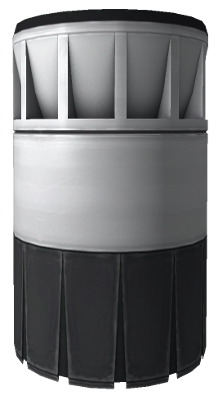
Which, have a thrust related to the current velocity of the craft
The Velocity-Thrust Curve
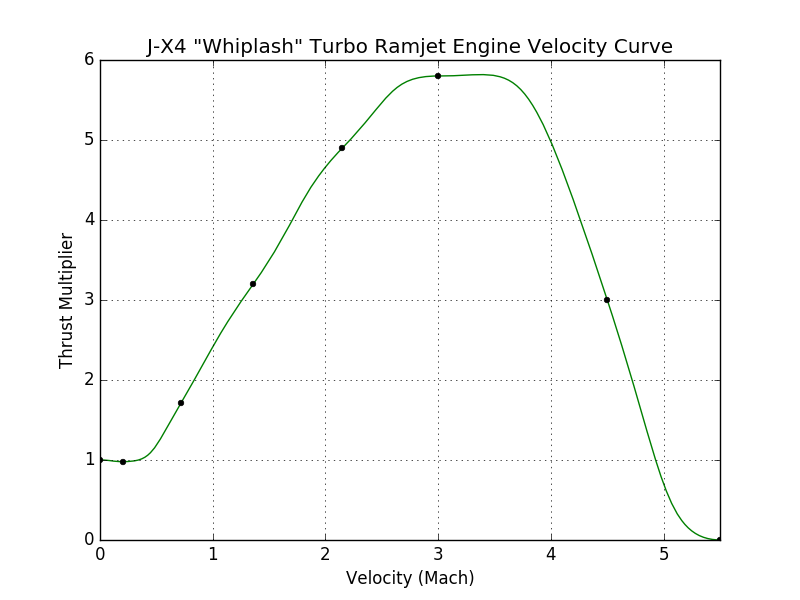
Why can it do that?
Because the engine, if you noticed, have gaps leading to the inside (of the engine). The Simpleplanes model also have it.
At low speeds the amount of air is insignificant, but at supersonic speeds this amount of air is rather generous.
This air, combined with the high temp engine exhaust, is added with some ignited jet fuel. This superhot mixture is then thrown out of the rear of the jet at very high speeds.
So why don't we just make a jet engine that uses supersonic intake air?
Because the jet engines simply can't handle that.
Modern airliner jet engine (a.k.a. high-bypass turbofan) can go as fast as 0.9 mach (which is about 1000 kmph). Spin any faster, the stress on the front (of the fan) would quickly led to engine failures.
Low-bypass turbofan can go beyond mach 1.0 as their smaller fans allow them to withstand more stress, but they quickly loose efficiency (because the need of turning all the fan at supersonic speed lead to massive drag on the fan which slow them down)
So, to go supersonic, we need to think of another approach. This is where the ramjet comes into play.

Because it have no moving parts, ramjet (and scramjet) generate little drag inside the engine. This allowed the engine to produce a reasonable amount of thrust, at speeds much higher than the max tolerance of any other kind of jet.
Yes, the fuel efficiency (and by extension, amount of thrust) will be low, but it work at extreme altitudes (20 Km and above), where there isn't a lot of air to create said drag, either. As the thinning air require the aircraft to go very fast, which result in the speed boost and more thrust, this engine is best used at very high speeds and altitude.
The (afterburning) turbo ramjet is a combo of a low-bypass turbofan and a ramjet. The gaps on the engine leads to the rear combustion chamber (the scramjet), while the jet engine (at the front) allows for efficient low-and-mid altitude flight, as well as getting the aircraft to a reasonable speed before the ramjet can kick in.
Yes, the jet engine need low altitude thick air to get really strong, but at the same time, the thick air prevent the craft from going too fast, which limits the power output for the ramjet. As the need of going faster result in flying high, which result in it going really fast, this engine is best used at high altitudes, usually above the 15Km line, in the stratosphere.
Okay, now we need to nuke the drag model ... A airplane with these engines should not even exceed 1250Kmph at sea level, let alone 3000Kmph.
Although, you might not be able to do that anyway.
Climb high, this formula have enough potential to send a craft flying above 30Km, where control surfaces became noticeably
less effective. However, above this altitude, even the scramjet will be struggling to maintain the pressure for combustion, and it usually flares out below that.
NOW we can talk about supersonic drag and stuff. NOW we can talk about true high-altitude, supersonic or even hypersonic flight.
If it means anything in SP -- and, if any one of you actually spend time to think about it.
The engine thrust vanes (or whatever you call the moving thrust-condensing part) should only actively focus the hot exaust (of the jet engine) when the ramjet (or afterburner) isn't active. Once the afterburner kick in it should be open (or close for a little bit) to minimize the amount of drag (and avoid melting) for the ramjet operation.
Specifications
Spotlights
- TriStar 5.1 years ago
General Characteristics
- Successors 1 airplane(s) +14 bonus
- Created On iOS
- Wingspan 41.6ft (12.7m)
- Length 45.2ft (13.8m)
- Height 14.6ft (4.5m)
- Empty Weight 16,301lbs (7,394kg)
- Loaded Weight 25,293lbs (11,472kg)
Performance
- Power/Weight Ratio 2.665
- Wing Loading 58.7lbs/ft2 (286.4kg/m2)
- Wing Area 431.2ft2 (40.1m2)
- Drag Points 4492
Parts
- Number of Parts 75
- Control Surfaces 5
- Performance Cost 511

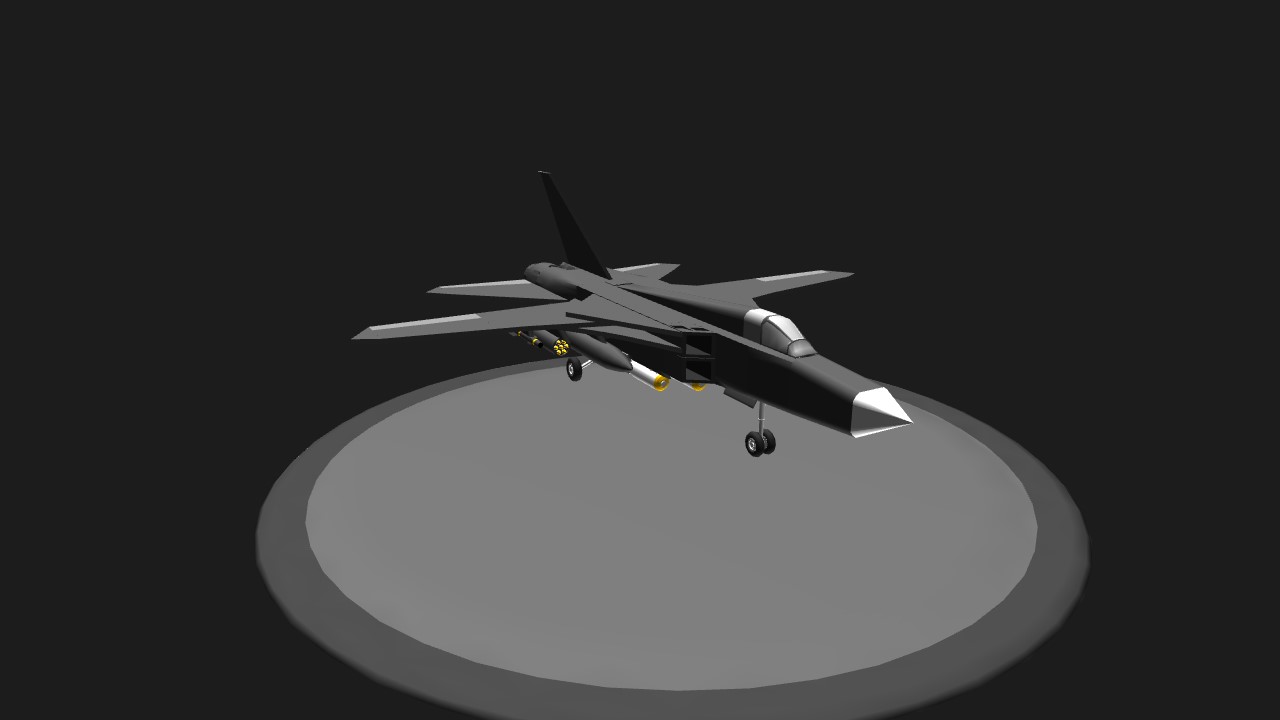
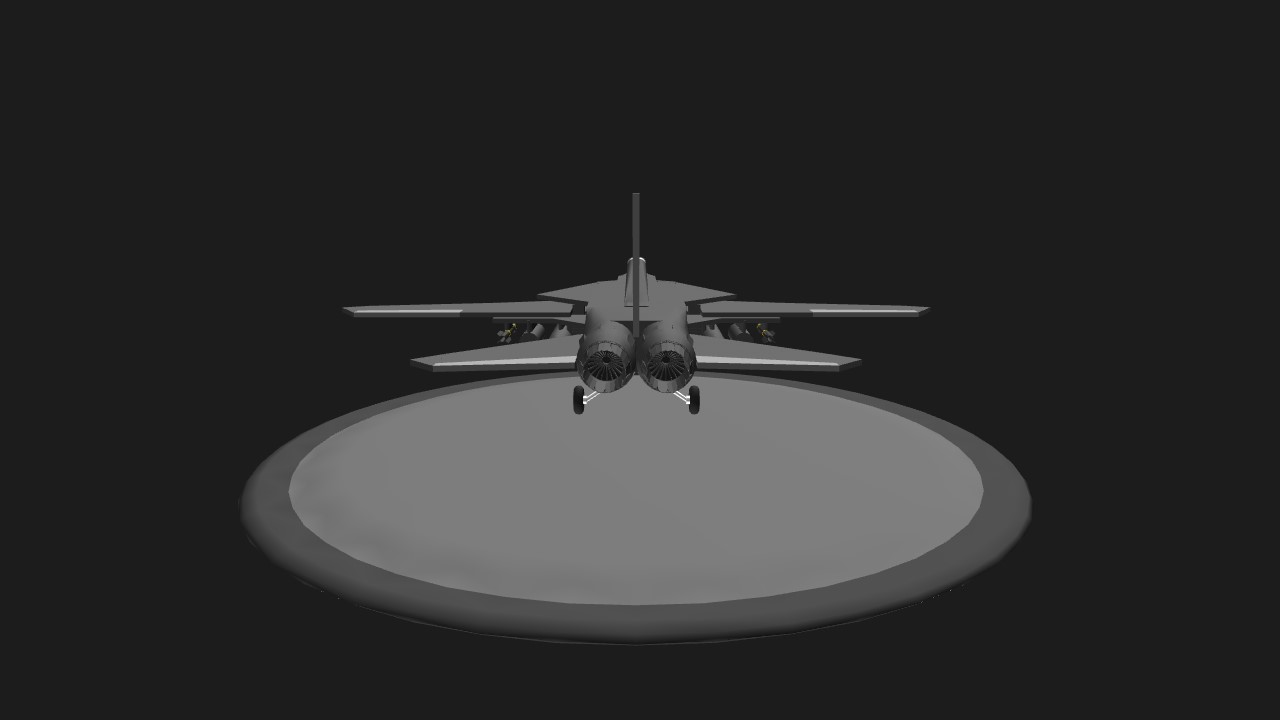
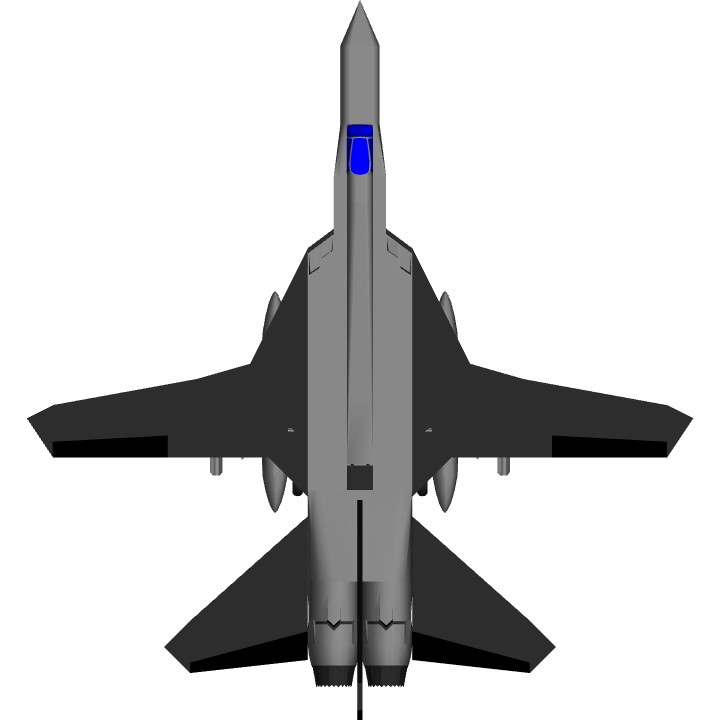
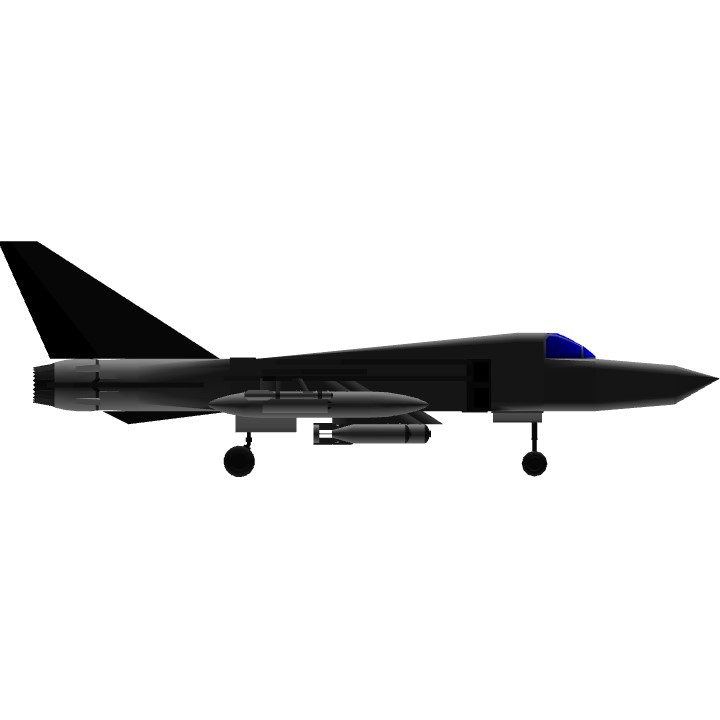
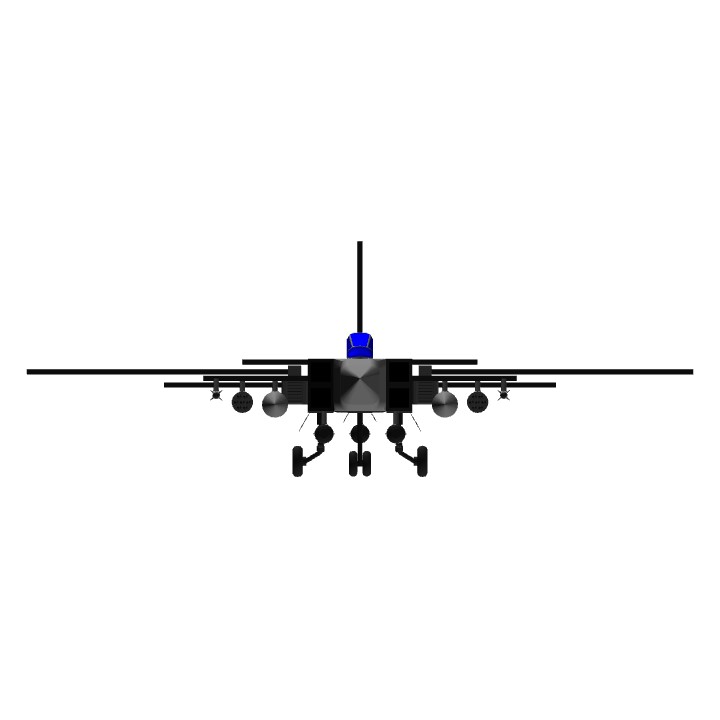
@AndrePlaysSP
"since the jets there, as you go faster"
Well ...
there's different kinds of jets. Airliner jets (high-bypass turbofan) and military non-afterburning jets (low-bypass turbofan) behave more linearly and, in the case of hi-bypass jets, can't exceed 0.9 mach.
low-bypass can reached past 1 mach but they quickly loose efficiency (or thrust).
Only the ones with afterburner will have similar effects, and yet they will also be capped at a certain speed.
My function here actually had the value capped by TAS too. It's just because simpleplanes' atmosphere model is crazy beyond 10KM, the throttle is multiplied too much so the jet seem to responds slowly.
But I believe that the TAS value (retrieved via "TAS" from funky trees) above 15KM is also unreliable (and value tend to go too big), so I just throw together the most practical formula I can and called it a day.
I hadn't had SP2 yet; I have little reason to ask for one, too, since I am having some decent fun building vehicles in SP and low-altitude aircrafts.
I could ask for more, but now that I don't -- I simply avoid it.
It's also disappointing to see Jundroo implementing this "feature" in newer software where they could clearly update their old one. Perhaps they want more cash, I don't know. I feel like this is unfair so I started shouting at different places.
@LUFTWAFFALES
yep it is
The values (e.g. 4000, 5000 and the like) are only roughly accurate for a supersonic ramjet. Depend on the application (the amount of thrust needed, and the altitude), these values can be easily modified.
Note:
I hold absolutely NO RESPONSIBILITY in decreased range and increased fuel comsumption of modified engines.
Those responsibility are yours, so don't come to me about how it crashes the game, too.
(It really shouldn't. I set hard limits for it, too)
wow this man is good